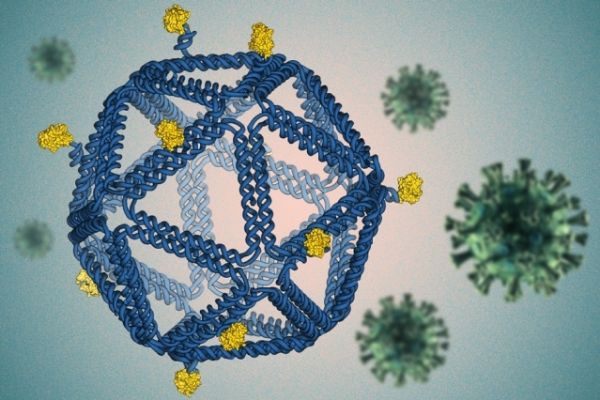By folding DNA into a virus-like structure, MIT researchers have designed HIV-like particles that provoke a strong immune response from human immune cells grown in a lab dish. Such particles might eventually be used as an HIV vaccine.
The DNA particles, which closely mimic the size and shape of viruses, are coated with HIV proteins, or antigens, arranged in precise patterns designed to provoke a strong immune response. The researchers are now working on adapting this approach to develop a potential vaccine for SARS-CoV-2, and they anticipate it could work for a wide variety of viral diseases.
“The rough design rules that are starting to come out of this work should be generically applicable across disease antigens and diseases,” says Darrell Irvine, who is the Underwood-Prescott Professor with appointments in the departments of Biological Engineering and Materials Science and Engineering; an associate director of MIT’s Koch Institute for Integrative Cancer Research; and a member of the Ragon Institute of MGH, MIT, and Harvard.
Irvine and Mark Bathe, an MIT professor of biological engineering and an associate member of the Broad Institute of MIT and Harvard, are the senior authors of the study, which appears today in Nature Nanotechnology. The paper’s lead authors are former MIT postdocs Rémi Veneziano and Tyson Moyer.
Read more at Massachusetts Institute of Technology
Image: By folding DNA into a virus-like structure, MIT researchers have designed HIV-like particles that provoke a strong immune response from human immune cells grown in a lab dish. CREDIT: Courtesy of the researchers, edited by MIT News


